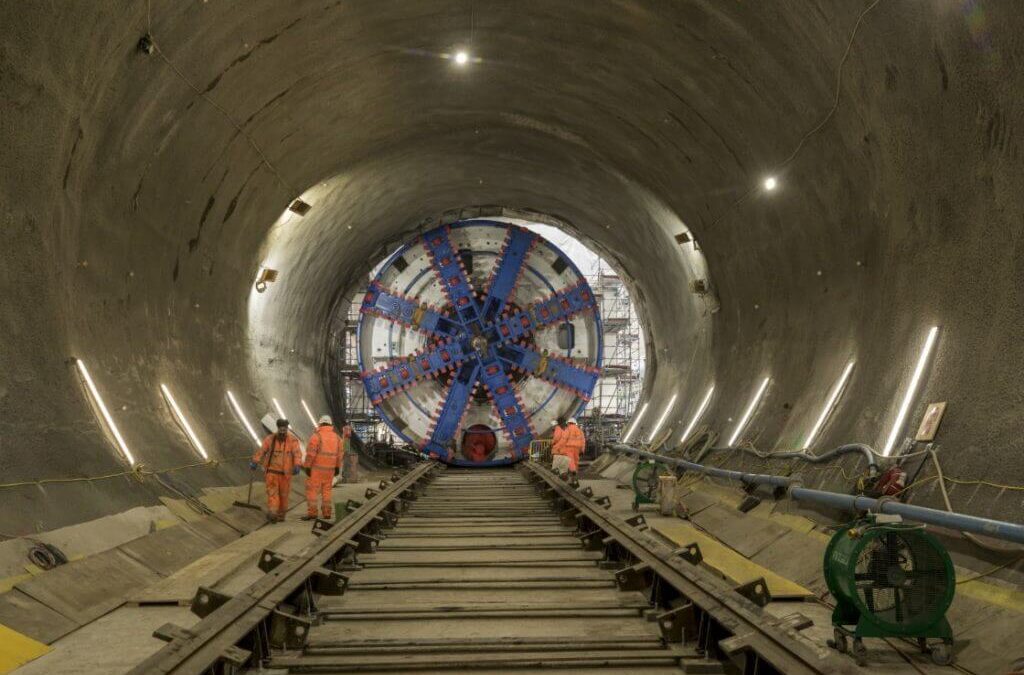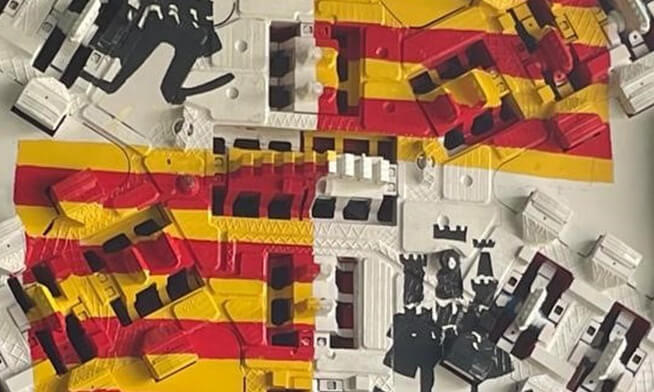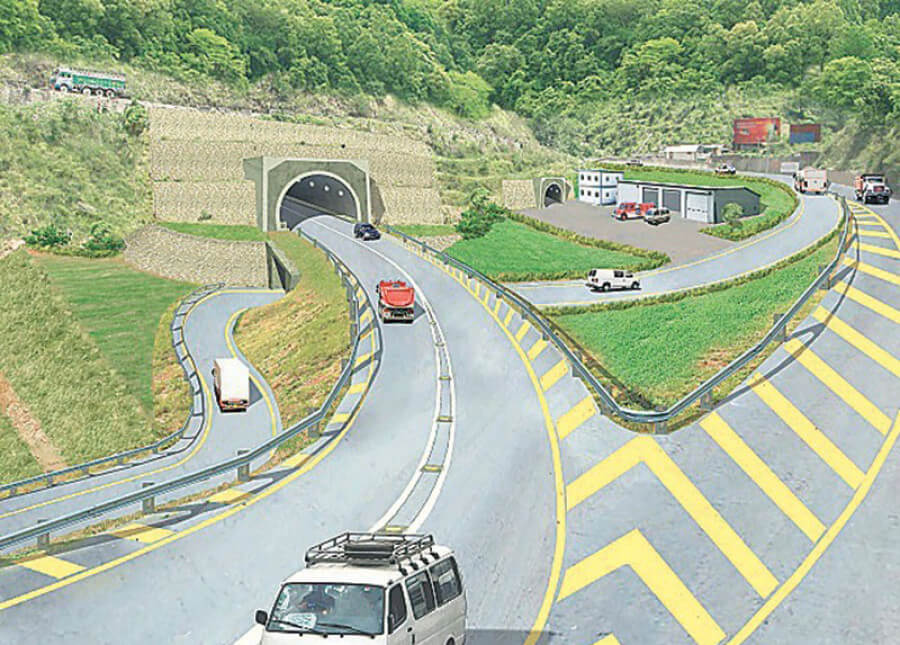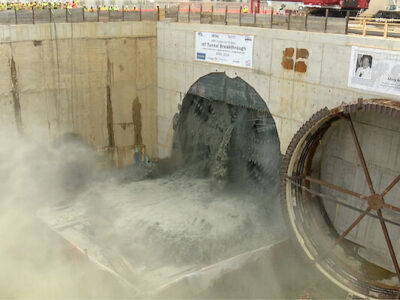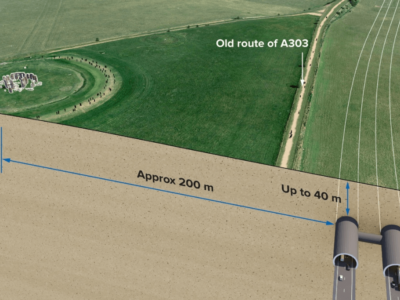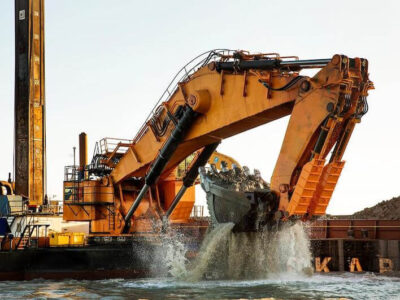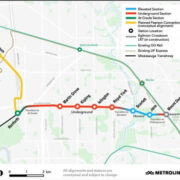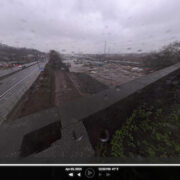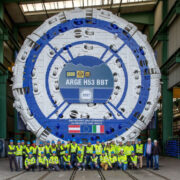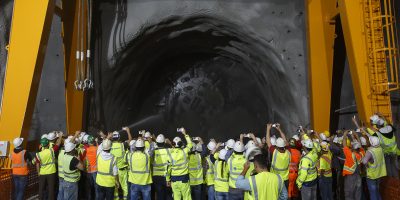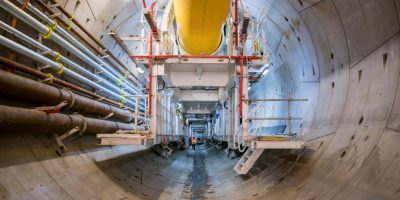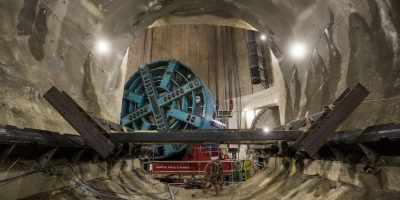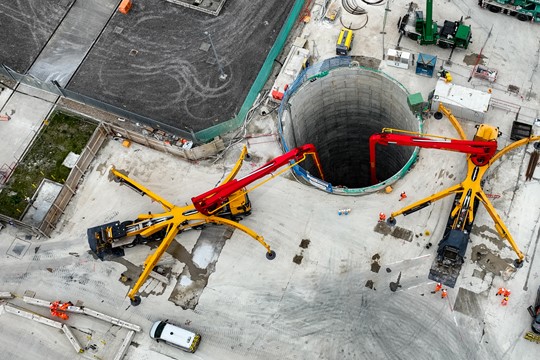
The world’s largest continuous pour of cement-free Earth Friendly Concrete in a tunnel drive shaft on National Grid’s £1bn London Power Tunnels phase 2, has been done by the Hochtief Murphy Joint Venture.
While on 22 April, the record-breaking pour of cement-free concrete took place at National Grid’s Hurst substation in south London, in order to filling the base of the 55m deep tunnel drive shaft to its permanent level the Earth Friendly Concrete (EFC) was poured.
Also successful completion of 9.2km of tunneling over two tunnel drives from Hurst to Eltham and Crayford was implemented before and the National Grid said the 763m3 continuous pour has saved an estimated 82t of CO2.
Being created by Australian construction materials company Wagners and supplied by Capital Concrete, has extensively trailed at different London Power Tunnel sites by National Grid and contractor Hochtief Murphy Joint Venture (HMJV).
A binder of ground granulated blast furnace slag and fly ash geopolymer concrete system, that is being used by EFC has been chemically activated using industrial waste products instead of cement and the concrete is expected to decrease carbon by almost 64%, saving an estimated 111kg of CO2 per cubic meter poured.
According to the project team, the use of EFC was driven forward by a team of young engineers, including J Murphy & Sons engineer Carys O’Shea and Hochtief section engineer Kaja Kacperska, supported by other HMJV specialists, Aecom, Mott MacDonald and WSP.
“The incredible work the team have done on the project in the trialing and large-scale use of Earth Friendly Concrete in temporary as well as permanent applications is a great example of that,” said HMJV technical lead Raj Kundan.
He also added: “Completing the largest ever continuous cement free concrete pour is testament to the ingenuity and collaboration of all involved working as part of this Project 13 Enterprise scheme, and shows how a client, contractor and the supply chain can work together to help take a major step moving the industry forward in reducing carbon emissions.”
Elsewhere on the London Power Tunnels project, National Grid said: “There are several measures in place to reduce the environmental impact of construction and keep it on track to achieve net zero construction across its projects by 2025/26.”
According to National Grid, these include:
- Optimization of designs and construction methodologies of the tunnel and shafts network by HMJV, saving approximately 50,000t of CO2, leading to a 30% reduction against baseline
- 98% of project waste being diverted away from landfill, a 21% reduction against the carbon reduction pre-project baseline for shafts, tunnels and headhouses, equivalent to 25,250t of CO2
- A new 400kV substation at the heart of the project in Bengeworth Road, Lambeth, will be built using SF6 free gas insulated switchgear technology in a UK first.
The chance of evaluating the technology ahead of future possible rollout across its network in England and Wales, has also been presented to National Grid by EFC pour.
The previous EFC pour record was held by High Speed 2’s Euston station site, where John F Hunt used the cement-free concrete to create a temporary foundation slab.

